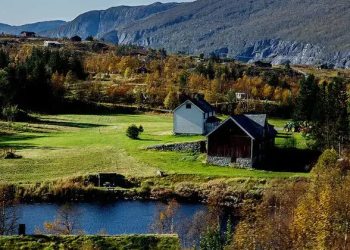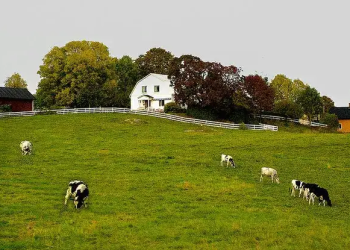Introduction
In recent years, there has been a growing interest in edible landscaping, a practice that combines the beauty of ornamental plants with the functionality of growing food in your backyard. In this article, we will explore the benefits of edible landscaping and provide practical tips for growing your own food at home.
Benefits of Edible Landscaping
Edible landscaping offers a multitude of benefits, both for individuals and the environment. By incorporating edible plants into your landscape, you can enjoy fresh, homegrown produce while reducing your environmental footprint. Additionally, gardening can promote physical activity and mental well-being, leading to improved overall health and well-being.
Planning Your Edible Landscape
Before diving into edible landscaping, it’s essential to plan your garden carefully. Start by assessing your space and considering factors such as sunlight exposure, soil quality, and drainage. Select a variety of edible plants that are well-suited to your climate and growing conditions, and design a layout that is both functional and aesthetically pleasing.
Choosing Edible Plants
When selecting edible plants for your landscape, consider a mix of vegetables, fruits, and herbs that will provide a diverse and abundant harvest throughout the growing season. Choose plants that are suited to your climate and growing conditions, and opt for varieties that are disease-resistant and high-yielding.
Soil Preparation and Maintenance
Good soil is the foundation of a successful edible landscape, so it’s essential to test your soil and make any necessary amendments before planting. Improve soil fertility by adding organic matter such as compost or aged manure, and maintain soil moisture and structure through regular mulching and watering.
Companion Planting and Pest Management
Companion planting is a gardening technique that involves planting different crops together to enhance growth and repel pests. By interplanting compatible species, you can naturally control pests and promote healthy plant growth without the need for harmful chemicals.
Seasonal Planting and Harvesting
Plan your garden for year-round harvests by selecting a mix of seasonal crops that will mature at different times throughout the year. Practice crop rotation and succession planting to maximize yields and minimize soil depletion, and harvest fruits and vegetables at peak ripeness for the best flavor and nutritional value.
Pruning and Maintenance
Regular pruning is essential for maintaining the health and productivity of your edible landscape. Remove dead or diseased branches, and thin out overcrowded plants to improve air circulation and sunlight penetration. Stay on top of regular maintenance tasks such as weeding, watering, and fertilizing to keep your garden looking its best.
Harvesting and Preserving Your Yield
When it comes time to harvest your bounty, be sure to pick fruits and vegetables at peak ripeness for the best flavor and nutritional value. Preserve excess produce by canning, freezing, or drying, allowing you to enjoy homegrown goodness all year long.
Educational and Recreational Opportunities
Involving children in gardening can be a fun and educational experience, teaching them valuable life skills and fostering a connection to nature. Consider hosting garden tours or workshops to share your knowledge and enthusiasm for edible landscaping with others in your community.
Community Building Through Edible Landscaping
Edible landscaping can also be a powerful tool for building community and fostering connections with neighbors. Share surplus produce with friends and neighbors, and consider participating in community gardening initiatives or food-sharing programs to support those in need.
Environmental Impact of Edible Landscaping
By growing your own food at home, you can reduce your reliance on industrial agriculture and minimize your carbon footprint. Homegrown produce requires fewer food miles to reach your plate, reducing greenhouse gas emissions and supporting local food systems. Additionally, edible landscaping promotes biodiversity and ecosystem health by providing habitat for beneficial insects and wildlife.
Economic Considerations
While there may be upfront costs associated with establishing an edible landscape, the long-term economic benefits can be significant. By growing your own food at home, you can save money on grocery bills and reduce your overall food expenses. Additionally, investing in sustainable gardening practices can help lower maintenance costs and increase the long-term sustainability of your garden.
Challenges and Solutions
Like any gardening endeavor, edible landscaping comes with its challenges. Limited space, soil contamination, and pest management are common issues that gardeners may encounter. However, with careful planning and proactive management strategies, these challenges can be overcome, allowing you to enjoy a bountiful harvest from your backyard garden.
Conclusion
In conclusion, edible landscaping offers a wealth of benefits for individuals, communities, and the environment. By growing your own food at home, you can enjoy fresh, healthy produce while reducing your environmental footprint and connecting with nature. Whether you have a small backyard or a spacious garden, there are endless opportunities to create a beautiful and productive edible landscape that will nourish both body and soul.

FAQs After The Conclusion
1. What are the best vegetables to grow in an edible landscape?
- Some popular vegetables for edible landscapes include tomatoes, peppers, cucumbers, zucchini, and lettuce, which are relatively easy to grow and produce bountiful harvests.
2. How can I improve the soil quality in my garden?
- Improve soil quality by adding organic matter such as compost, aged manure, or mulch, which will enrich the soil with essential nutrients and improve soil structure and fertility over time.
3. Are there any low-maintenance edible plants suitable for beginners?
- Yes, some low-maintenance edible plants suitable for beginners include herbs such as mint, basil, and chives, as well as perennial fruits like strawberries, raspberries, and blueberries, which require minimal care once established.
4. How can I prevent pests and diseases in my edible landscape?
- Practice good garden hygiene by removing diseased plants and weeds promptly, and encourage biodiversity by planting a variety of different crops to minimize pest infestations. Consider using natural pest control methods such as companion planting, beneficial insects, and organic pesticides as needed.
5. Can I grow fruit trees in a small backyard?
- Yes, many fruit trees can be grown successfully in small backyards, especially dwarf or semi-dwarf varieties that are well-suited to container growing or espalier techniques. Choose compact fruit trees such as apple, pear, cherry, or citrus, and provide proper pruning and care to maximize yields in limited space.
6. How much space do I need to start an edible landscape?
- The amount of space you need will depend on the size and layout of your garden, as well as the types of plants you want to grow. Even a small balcony or patio can be transformed into a productive edible landscape with careful planning and creative use of space-saving techniques such as vertical gardening and container growing.
7. Is it possible to grow organic produce in an edible landscape?
- Yes, it is possible to grow organic produce in an edible landscape by using organic gardening practices such as composting, natural pest control, and avoiding synthetic fertilizers and pesticides. By prioritizing soil health and biodiversity, you can create a sustainable and eco-friendly garden that produces healthy, chemical-free food for you and your family.
8. How can I get started with edible landscaping if I have no gardening experience?
- Start small and focus on a few easy-to-grow plants that are well-suited to your climate and growing conditions. Educate yourself by reading gardening books, attending workshops, or joining online gardening communities where you can ask questions and learn from experienced gardeners. Don’t be afraid to make mistakes and experiment with different plants and techniques until you find what works best for you and your garden.












